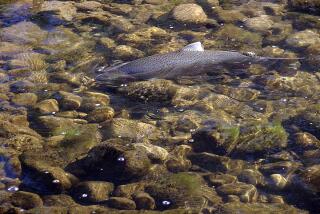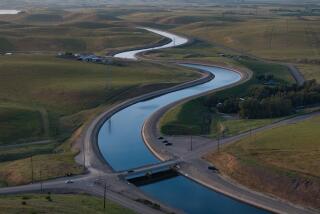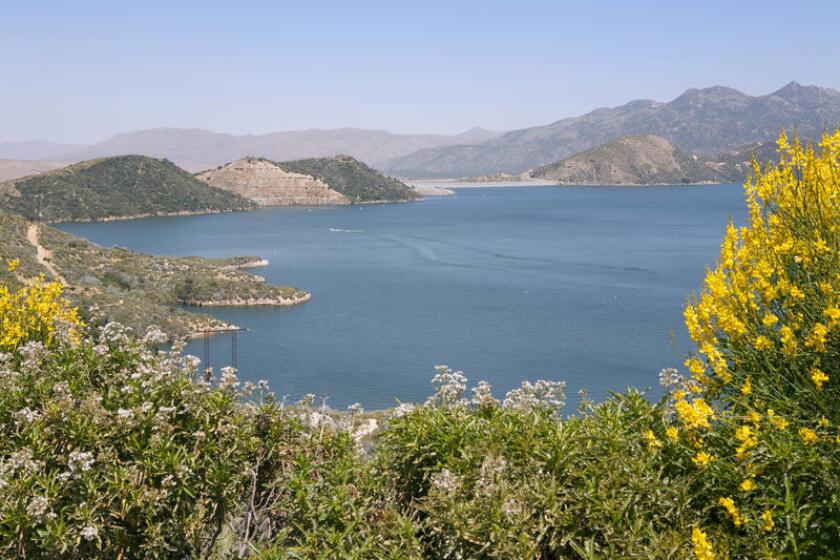
California environmental groups are urging a federal court to intervene amid a “dramatic increase” in the deaths of threatened steelhead trout at pumps operated by state and federal water managers.
Since Dec. 1, more than 4,000 wild and hatchery-raised steelhead have been killed at pumps in the Sacramento-San Joaquin River Delta, according to public data for the State Water Project and the federal Central Valley Project. The agencies are now at about 90% of their combined seasonal take limit, which refers to the amount of wild steelhead permitted to be killed between January and March under the U.S. Endangered Species Act.
A coalition of environmental and fishing groups — including the Golden State Salmon Assn., the Bay Institute and Defenders of Wildlife — are involved in ongoing litigation that seeks to challenge current federal operating plans in the delta, an estuary at the heart of the state’s water supply. They say the protocols are largely based on outdated rules dating to the Trump administration and are asking the court to require several modifications to better protect fish, including setting targets for water temperatures and upstream storage in Shasta Lake.
The cause of the recent uptick in fish deaths is unclear, but the sudden increase in steelhead at the pumps is unusual, according to Ashley Overhouse, a water policy advisor with Defenders of Wildlife. About 2,100 live steelhead have also been collected from fish screens at the pumps and released downstream, a process known as “salvage,” data show.
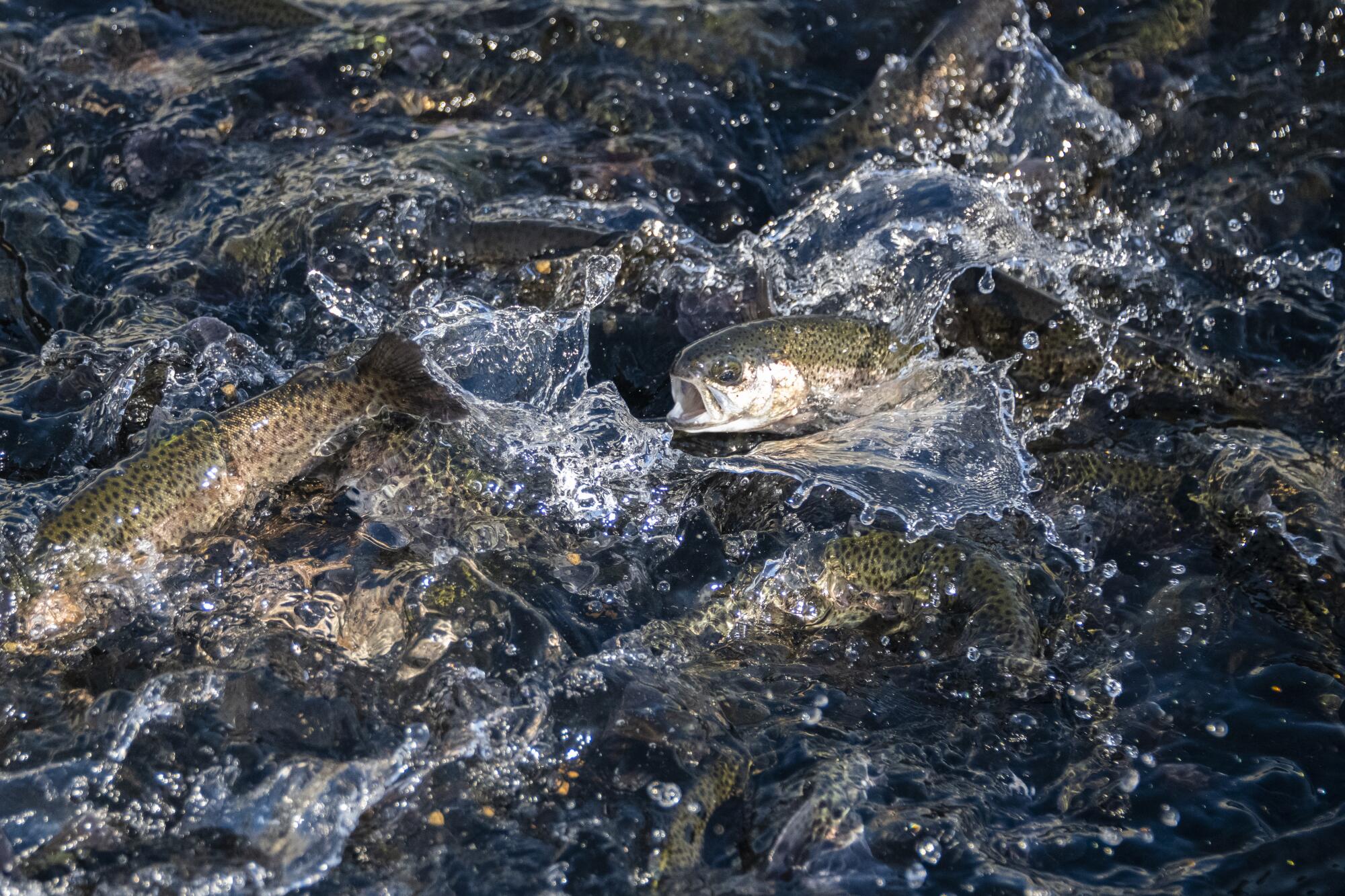
“We would appreciate additional monitoring, genetic sampling and, frankly, transparency [around the] increase in fish kills like this across any of the threatened and endangered species that rely on a healthy Bay Delta estuary that are dying at the pumps,” Overhouse said. “Because this is not the first increase in a fish kill over the last four years, and I don’t think, unfortunately, it will be the last.”
Aggressive and impactful reporting on climate change, the environment, health and science.
The Central Valley Project — a massive network of dams, reservoirs and canals operated by the U.S. Bureau of Reclamation — is a key source of water for agricultural users in the southern part of the state. The State Water Project, operated by the California Department of Water Resources, is a similar network that provides water to about 27 million residents.
But because the federal and state agencies coordinate their operations and pump jointly, the “fish death … and salvage are attributed to both parties,” Overhouse said.
Central Valley steelhead are federally listed as a threatened species. A type of rainbow trout, they are a distinct population that migrate from the American River and San Joaquin River, two major tributaries of the delta. Like salmon, they are born in fresh water, migrate to the ocean, and then return to rivers as adults to spawn.
“These fish that are trying to make their way out to the ocean … then get sucked into the pumps,” said Scott Artis, executive director of the Golden State Salmon Assn. “And so we end up with less and less fish making it out to the oceans, and that’s less fish that return.”
The deaths of steelhead are an indicator of how the pumping is harming various fish species, and chinook salmon are also among the species that have been killed in recent weeks, Artis said. Since Dec. 1, 1,274 threatened spring-run chinook salmon and 353 endangered winter-run chinook salmon have been killed in the pumps, including wild and hatchery-raised salmon, the latest data show.
Salmon populations have declined in recent years, and last year regulators decided to shut down the fishing season for fall-run chinook along the coast. A decision about this year’s salmon fishing season has yet to be announced, but it’s expected to be heavily restricted or shut down again this year.
But increasing steelhead deaths due to water pumps are symptomatic of the severe stresses fish populations are experiencing, and demand changes to how the state’s water systems are managed, Artis said.
“This is a big overarching problem of how this whole system in California works with these pumps and with the water diversions,” he said. “We need to reduce the amount of water that’s being pumped, and that would actually help mitigate and reduce the impact to steelhead that are being sucked into these pumps.”
Biologists have begun collecting California’s spring-run Chinook salmon to raise them in captivity in an effort to prevent extinction.
The latest increase in fish deaths is not the first time environmental groups have clashed with water agencies over the delta — a delicate ecosystem that has in recent years been imperiled by heavy water withdrawals for agriculture and cities.
Bureau of Reclamation officials said they are working with the Department of Water Resources to reduce pumping at the Harvey O. Banks pumping plant and the nearby Jones pumping plant in two main channels in the south delta — the Old and Middle rivers. The reductions are being made “due to a large number of Central Valley steelhead being observed and collected at the Skinner Delta Fish Protective and Tracy Fish Collection facilities upstream of the pumping plants,” the agency wrote in a statement.
Officials with both agencies acknowledged that the fish can be vulnerable at pump screens during the wet and snowy months that coincide with their movement through the delta. But late winter and early spring are “also an important time for DWR to capture and move water into storage,” said Ted Craddock, deputy director with the State Water Project.
He noted that the agency operates its pumps in accordance with state and federal permits, including rules that require reduced pumping when endangered fish move into the vicinity of the pumps. It reduced pumping in January when delta smelt and winter-run chinook salmon were observed in the area, and again in February when steelhead moved in.
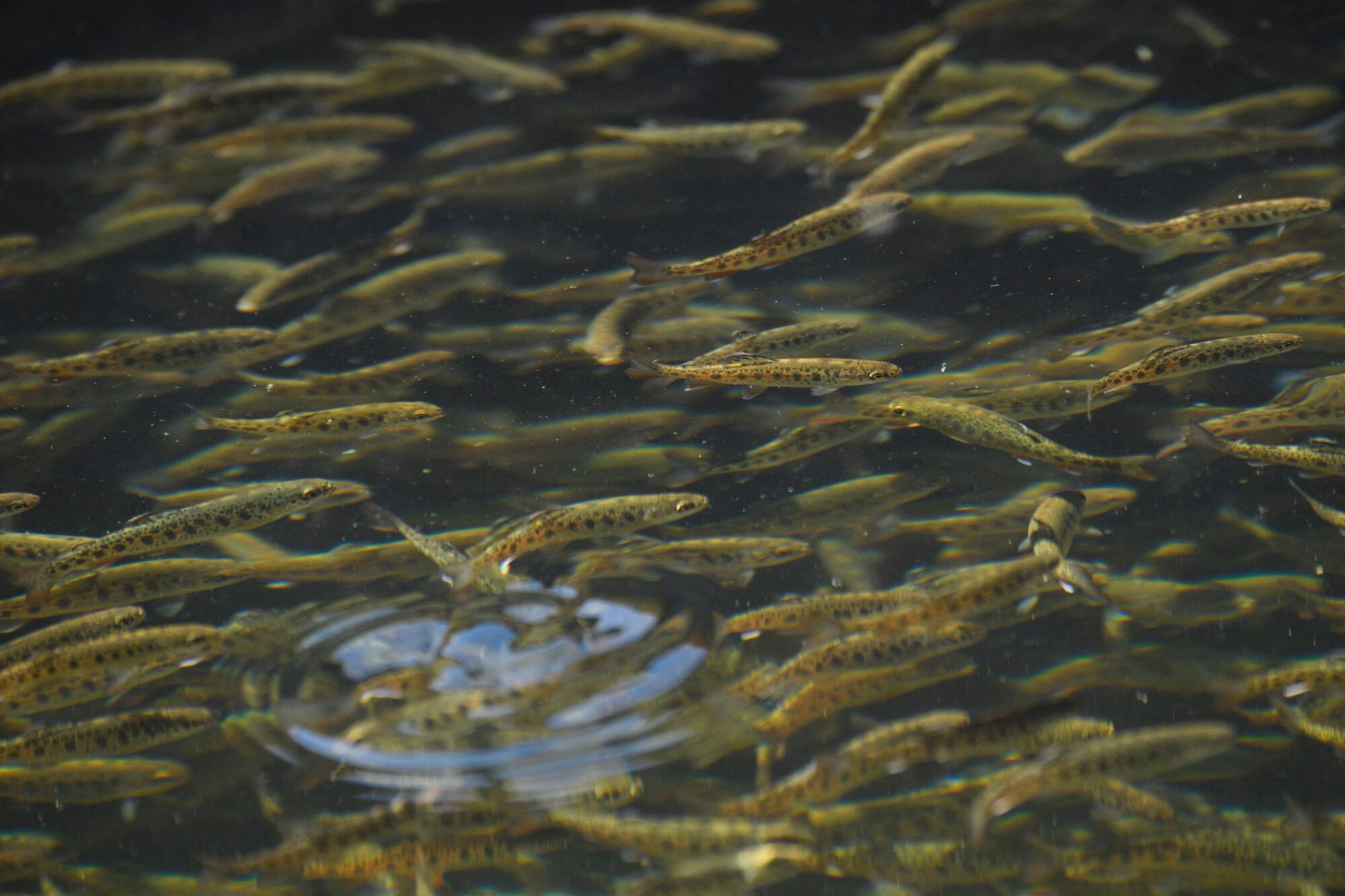
Despite the reduction, steelhead continued to be collected at the fish screens, Craddock said, including a small portion that were not wild but “poorly marked hatchery fish” that are not protected under the 2019 rules, formally known as the National Marine Fisheries Service Biological Opinion.
“DWR hypothesizes that many wild steelhead moved into the vicinity of the pumps prior to the large storms last week and are subsequently [resting] near the pumps,” he said. “Given current lower pumping levels and high flows as result of the storms last week, DWR does not believe the SWP is drawing additional steelhead near the pumps.”
Even so, the agency on Monday again reduced its pumping from 2,400 cubic feet per second to 600 cubic feet per second, “which may help steelhead rearing near the SWP pumps to move quickly downstream en route to the ocean,” Craddock said. “In fact, since the initiation of the March 11 pumping reduction, DWR has not collected any steelhead at its fish screens.”
He added that the agency plans to initiate a study on Friday to track the movements of steelhead and assess whether the pumping reduction is effective. The DWR is also making new investments in steelhead monitoring, including using new DNA technology to identify the origin of steelhead showing up at the fish screens.
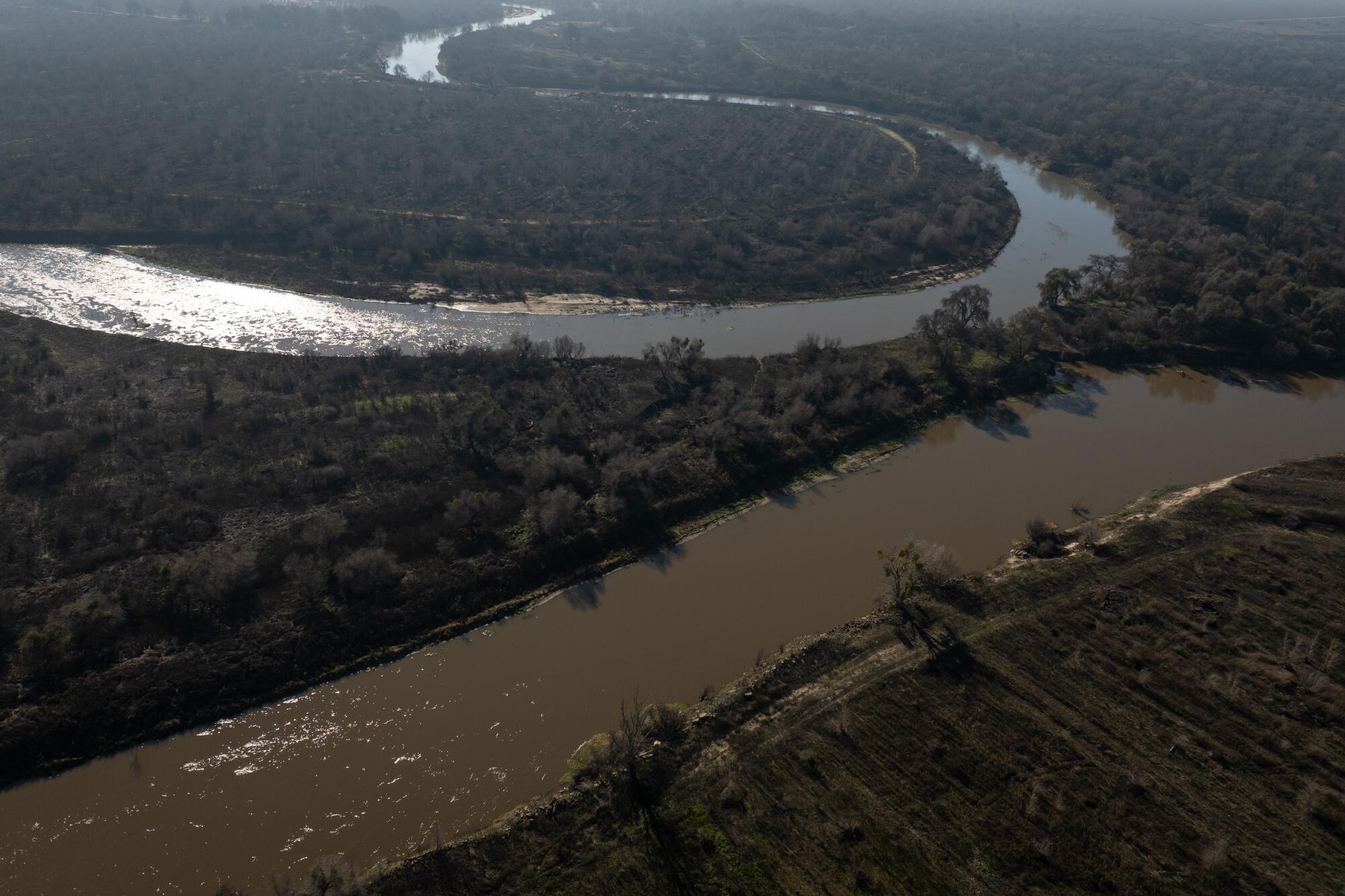
Meanwhile, federal officials are also working with the Bureau of Reclamation to reexamine the 2019 biological opinions that govern the state and federal operations, including proposed thresholds for losses of salmon and steelhead at the delta pumping facilities.
Under the proposal, weekly loss thresholds would “prompt action before disproportionate impacts on steelhead occur in a single week,” said Michael Milstein, a spokesperson for NOAA Fisheries. This would be a change from the current approach, which uses seasonal loss thresholds to trigger management actions.
The Bureau of Reclamation is also proposing to develop a steelhead science plan, which would include a “juvenile production estimate” framework for the San Joaquin and Sacramento river basins, he said. That estimate “can then be used to develop loss criteria for steelhead that are scaled according to population size and trends instead of historic loss levels, which is what is currently used.”
This sort of estimate is already used for management decisions regarding endangered winter-run chinook salmon, Milstein said, and is “recognized as a scientifically durable approach.”
The evaluation of the biological opinion is expected to be completed by the end of this year, Milstein said. Until then, the water agencies are operating under interim plans that are supposed to be reviewed and approved by the court every year, with 2024’s update still pending.
The Delta Conveyance Project is a key component of Gov. Gavin Newsom’s strategy for a hotter, drier California. Opponents say it will be an ecological disaster.
Artis, of the Golden State Salmon Assn., noted that the fish deaths have occurred at the pumps despite increased flows from recent storms.
“Even with more water out there, there’s still a lot of water diversions that are happening,” he said. “If you can reduce the pumping, then you don’t have quite that pull, that suction through there, that can just basically grab those baby fish.”
The steelhead deaths add more ammunition to the ongoing tug-of-war between environmentalists and the state water managers, who are also deadlocked over a proposed plan to build a $16-billion, 45-mile tunnel that would move more water out of the delta to regions to the south.
State officials have touted the Delta Conveyance Project as a critical climate adaptation strategy and a key component of Gov. Gavin Newsom’s strategy for a hotter, drier California.
Overhouse, of Defenders of Wildlife, said she believes it is possible for the state to achieve both goals — water capture and wildlife protection — at the same time.
“It is not something that is easy — they are the most complex water projects, arguably, in the world,” she said of the Central Valley Project and the State Water Project. But increasing storage along the upstream reservoirs would make it easier for the agencies to better utilize stormwater runoff, and to hold water for movement through the system later in the year.
“While I recognize how important these operations are, it is still my belief that it can be achieved — both higher end-of-year storage as well as meeting those pumping needs,” Overhouse said. “And most importantly ... protecting the threatened and endangered species that rely on this estuary.”
Toward a more sustainable California
Get Boiling Point, our newsletter exploring climate change, energy and the environment, and become part of the conversation — and the solution.
You may occasionally receive promotional content from the Los Angeles Times.




